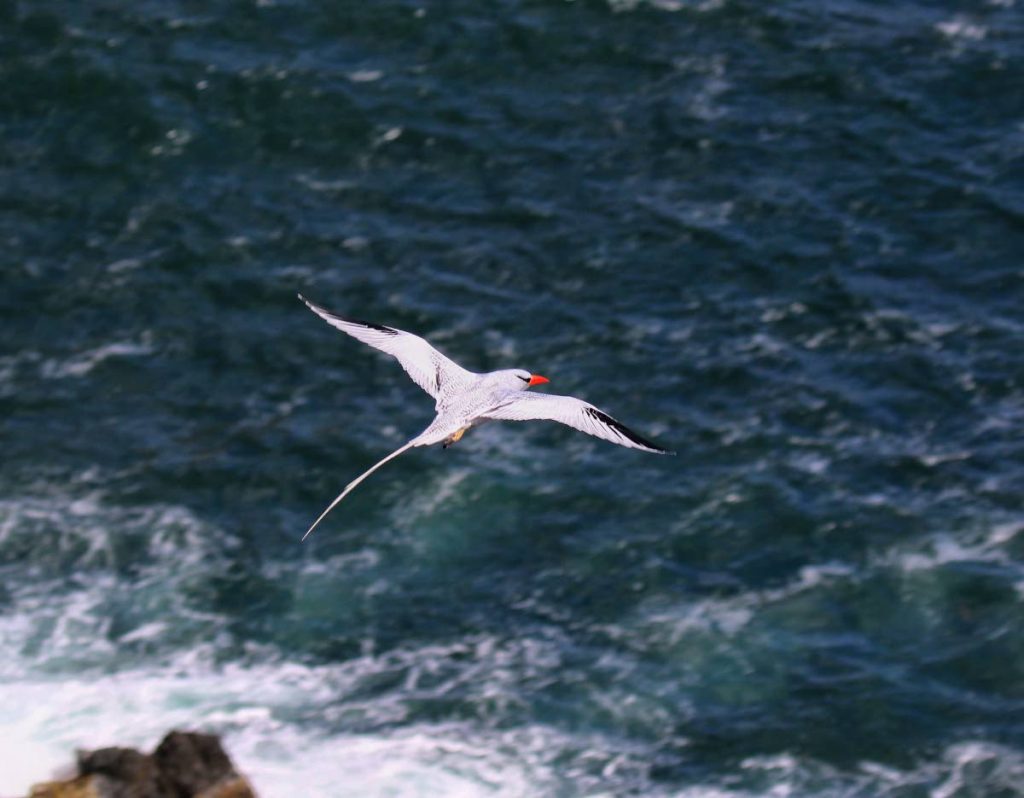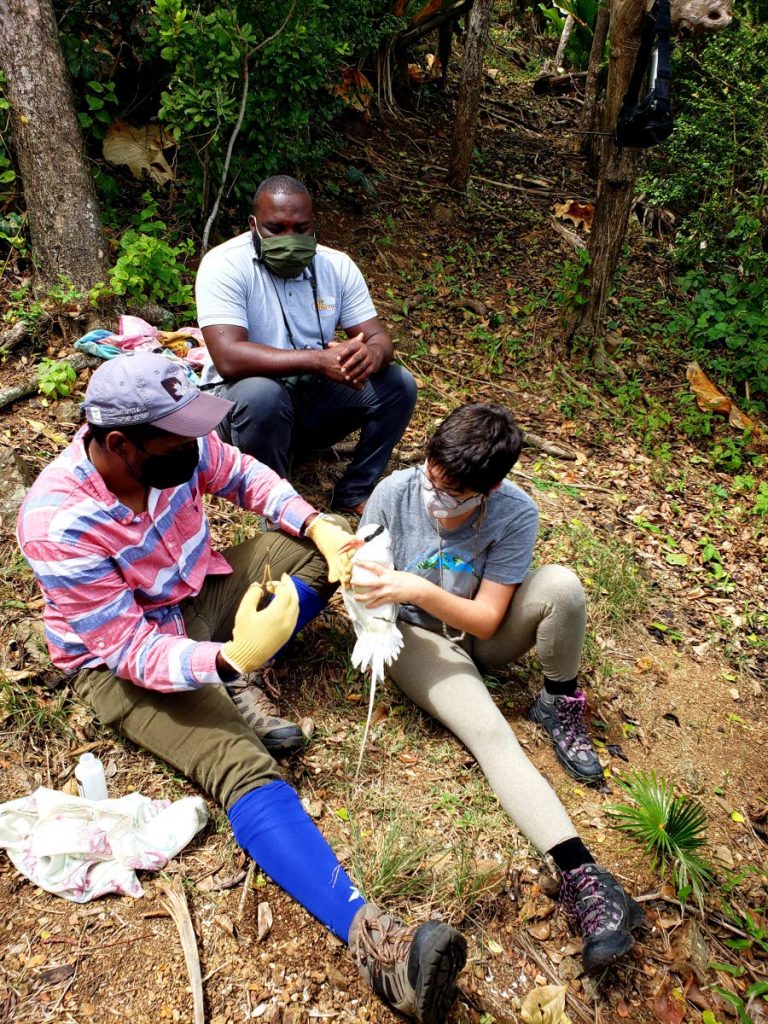Red-billed tropicbird, one of the laziest birds in Little Tobago

Of the estimated 500 species of birds found in TT, up to 50 of them can be found on the island of Little Tobago.
Located off Tobago’s northeastern coast, Little Tobago is one of the few places in TT where you can find breeding colonies of seabirds with the red-billed tropicbird (
Phaethon aethereus) being one of them.
“The red-billed tropicbird is really what people go to Little Tobago to see.
“Red-billed tropicbirds are one of the prettier birds found on the island because of their appearance, their flight and behaviour,” said wildlife biologist and freelance environmental consultant Darshan Narang.
For the past 12 years, Narang has been doing research on the birds of Little Tobago.
So, how did the red-billed tropicbird get its name?
“This particular species of tropicbird, the red-billed, is so named because of its red bill which can be different shades of red,” Narang told Newsday Kids.

Apart from its red bill, one of the most striking features of the tropicbird is its two long tail streamer feathers. Despite its striking beauty, you’ll be disappointed to know that the tropicbird is not easily seen.
How so? Well, tropicbirds spend most of their time at sea.
“What these birds do at sea is forage,” said Narang.
The red-billed tropicbird feeds on small fish like sardines with their preferred meal being the flying fish.
Tropicbirds can move at speeds of up to 24 metres per second when diving to catch fish just below the sea’s surface.
To help with their dives, the feathers of these birds are waterproof.
While they spend most of their time at sea, there’s a chance you may catch a glimpse of red-billed tropicbirds when they return to land to breed and nest from December to March.
“That’s how we’re able to see these tropicbirds on Little Tobago…it’s during their birthing season when they are finding mates and raising their young ones.”
Narang said the red-billed tropicbirds are one of the laziest when it comes to nesting birds and so, they build their nest and lay eggs almost anywhere.
“They would lay their eggs on the ground at the side of trails, under the wooden floorboards of the lookout points in Little Tobago. So, they are the easiest nesting seabirds to encounter.”
When caring for their young, the red-billed tropicbirds often bring back their daily catch to their nests but it’s not all smooth sailing.
Birds like the magnificent frigatebird, one of the only seabirds that cannot dive for fish, often steal their fish when they return to land.
“That (the bird stealing fish) is a very unique behaviour that you can see on Little Tobago and in a very few other places of the world.”

Every year, Narang and other researchers visit Little Tobago to monitor the status of birds like the red-billed tropicbird.
“We look at their colonies to see if they are increasing or decreasing (in number). We also look at the health of the individuals.”
While there isn’t an exact estimate on the number of red-billed tropicbirds found on Little Tobago, Narang said they can be found in the hundreds, but their numbers fluctuate over the years.
The changes in the numbers found on the island are due to reasons such as the availability of fish stocks on which they prey.
Thankfully, the red-billed tropicbirds are not hunted for their meat but other species of birds on Little Tobago do face the threat of being illegally hunted.
=

Comments
"Red-billed tropicbird, one of the laziest birds in Little Tobago"